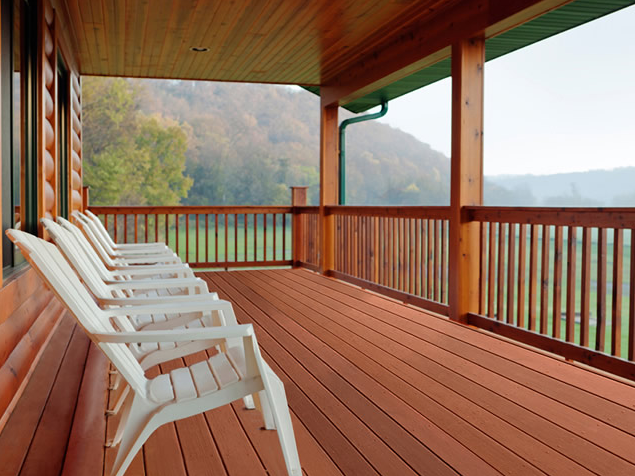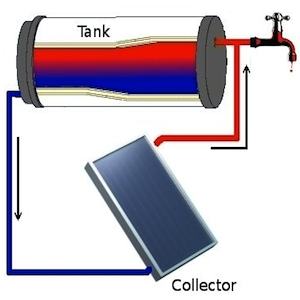Solar Hot Water Systems
Hot water. Think about it. Think about hot water and how much we have come to rely on and expect hot water to be available in our lives at any time of the day or night. Heating that water is quite often one of the largest sources of energy usage in an energy-efficient home.
The first step in reducing water heating costs should be to minimize the overall amount of hot water used in the home. Installing water-conserving clothes washers and dishwashers, using aerators on faucets and low-flow showerheads, and insulating the hot water tank and hot water pipes all will greatly reduce the overall amount of water that needs to be heated in the first place.
After you've reduced the amount of hot water needed, the biggest thing you can do to reduce the environmental and financial costs of heating water is to install a solar water heating system. Solar hot water systems can be used in any climate to reduce or eliminate water heating costs using the energy of the sun, which is abundant and free.
How Solar Hot Water Systems Work
An in-depth explanation of how a solar hot water systems work is beyond the scope of this article, but the overall concepts are straightforward. Solar hot water systems use solar collectors to harness the sun's energy and heat the water and store it. There are several types of solar hot water systems, each incorporating either an active or passive design.
Active Solar Hot Water Systems
Active solar hot water systems use pumps to circulate the water or heat-transfer fluid through the solar collector. Systems of this active type are active closed-loop and open-loop systems.
Active closed-loop systems circulate a non-freezing heat transfer fluid (such as propylene glycol antifreeze) through the solar collector where it is heated, into a storage tank where a heat exchanger transfers the heat from the fluid to the water. A closed-loop system is also known as an indirect system, since the water is heated in the storage tank by the heat transfer fluid, not by the solar collector directly. This system works in areas that get below freezing temperatures.
In the active open-loop solar water heating system, the home's water is directly heated in the solar collector and then pumped to a storage tank. Because the water is passed outside the home into the solar collectors, it should not be used in cold climates due to the possibility of freezing and damage to the collectors.
Passive Solar Hot Water Systems
Passive hot water systems do not use any circulation pumps or other electrical parts to move water through the system. Passive system types are thermosiphon and batch heaters.
The thermosiphon solar water heater has a storage tank that is placed above the solar collectors, and works on the principle of natural convection. Natural convection is simple: warm water rises and colder water sinks. Much like air, cold water is more dense than warmer water, so it sinks. This convection creates a flow of water through the system. As the cold water sinks to the bottom of the storage tank, it flows down into the solar collectors to be heated, then flows back up to the storage tank to be used by the house or recirculated after cooling down again.
Batch heaters are the simplest form of solar water heating. A batch heater is a dark colored storage tank placed in an insulated collector box with a glazed cover to absorb the sun's heat. Since the storage tank is actually inside the solar collector, batch systems are also known as integrated collector storage systems.
Most solar water heating systems are used as preheaters to augment conventional gas or electrical water heaters. Some systems use a separate storage tank that feeds into the standard water heater, while others have a single storage tank that incorporates a heating element that turns on when the water temperature reaches a certain point.
On-demand water heaters work very well with solar water systems. When there's lots of warm sunshine, the solar heating system does the work of heating most of the water, but in the winter or prolonged cloudy spells, the on-demand water heater can kick in and do more of the heating.A solar hot water system can cost thousands of dollars to install, but will increase your home's value and reduce energy costs and environmental impacts that will continue for decades, eventually paying for itself. Even if you're not planning on adding a solar water heating system at the time of your green home's construction, planning for one in the design of the home (south facing roof, pre-plumbing of pipes) will add little cost to the construction and make future installation easier.
Solar Hot Water System Reviews:
- Heliodyne Cool Climate Solar System
- SunEarth Copperheart Solar System
- SunEarth SunSiphon Solar System








































































































































